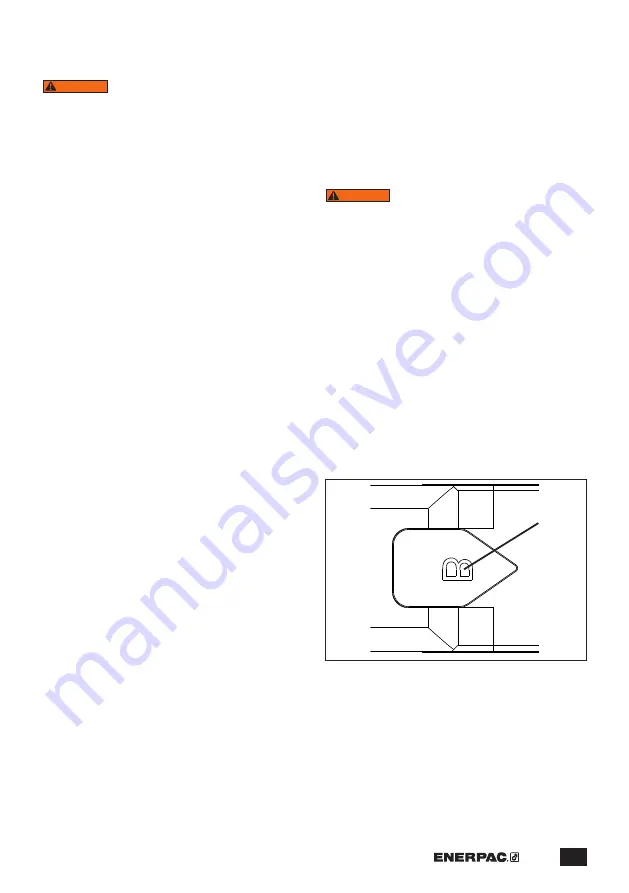
11
9.2 Operating Precautions
NOTICE:
WARNING
Failure to observe the following
precautions and instructions could result in death or
serious personal injury.
• Keep fingers, hands and other body parts clear of
the cutting head. Do not reach into the cutting area
during cutter operation.
• Do not attempt to reposition the chain being cut
while the cutter is in operation. If repositioning
is required, stop the cutter and loosen the piston
release lever to retract the piston. Then, tighten the
piston release lever and repeat the cutting process.
• After cutting is complete, chain segments may fall.
Keep body parts and equipment away from area
under and beside the cutter.
• Dangerous projectiles could occur at any
time during cutting. Always wear face and eye
protection. Keep persons away from cutting area.
• Cutter surfaces can become very hot. To prevent
burns, avoid contact with cutter components and
wear appropriate personal protective equipment.
• Refer to additional safety precautions in
Section 1.0 of this manual before using the cutter
or performing any maintenance or repair activities.
9.3 Trapped Air Removal
Before placing a new cutter into operation, cycle the
piston several times without load to remove any trapped
air in the hydraulic circuit.
Air is completely purged when the piston advances and
retracts smoothly in both directions, from fully advanced
to fully retracted.
This procedure should be performed after the oil in the
cutter is changed, and after any maintenance or repair
activity in which the oil is drained and replaced.
9.4 Locating and Positioning the Cutter
• Before inserting the chain inside the cutting head, be
certain that the cutter is placed on a solid and stable
work surface of sufficient weight rating capacity. Refer
to Section 2.2 for cutter weight.
• Position the cutter as needed using the handle/grip
mounted at the top of the cutter. The handle/grip
can also be used for transporting the cutter short
distances.
NOTICE:
WARNING
Because the cutter components are very
heavy, there is a risk of cuts, crushing or broken bones. To
avoid accidents, use care when working with the cutter.
Serious personal injury may result if the cutter is not
properly supported and handled in an appropriate way.
9.5 Using the Correct Fixed Blade
The cutter comes supplied with a short fixed blade and
a long fixed blade. The diameter of the chain to be cut
determines the blade to be used. See Section 10.6.2 for
instructions on how to replace the fixed blade. Always
make sure the proper blade is installed before you begin
cutting.
• A long fixed blade will have an “A” stamped into the
top of it. The “A” fixed blade is used for cutting chains
with a diameter of
0.47 inch [12 mm] or less
.
• A short fixed blade will have a “B” stamped into the
top of it. The “B” fixed blade is used for cutting chains
with a diameter
greater than 0.47 inch [12 mm]
.
Refer to fixed blade replacement instructions in
Section 10.6.2 if it is necessary to change the fixed
blade.
Figure 9, Fixed Blade Stamping (1)
1
Summary of Contents for ECCE26
Page 24: ...WWW ENERPAC COM...










































